|
54. Maculinea nausithous (Bergsträsser, 1779) / Dusky large blue / Lycaenidae – Polyommatinae
NL: donker pimpernelblauwtje / D: Schwarzblauer Bläuling, Dunkler Wiesenknopf-Ameisen-Bläuling / F: l’azuré des paluds
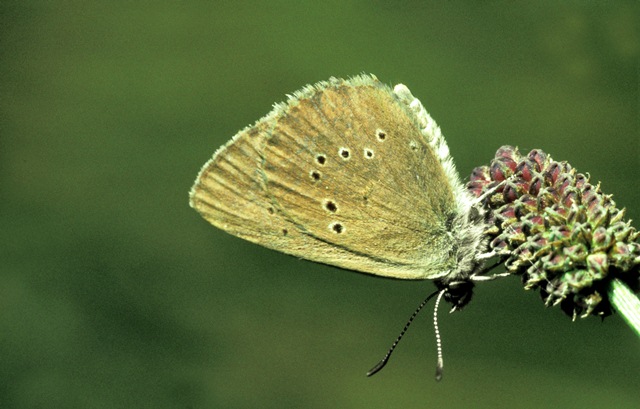 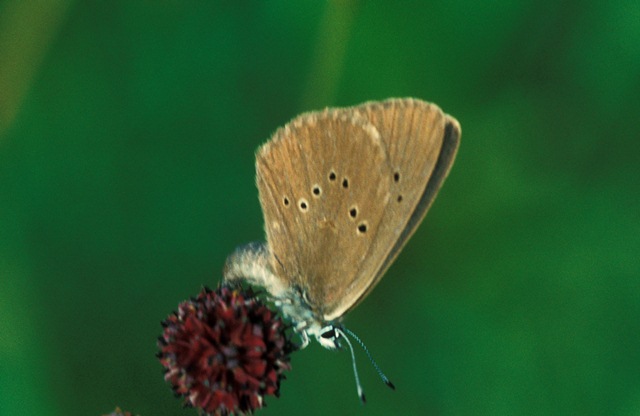 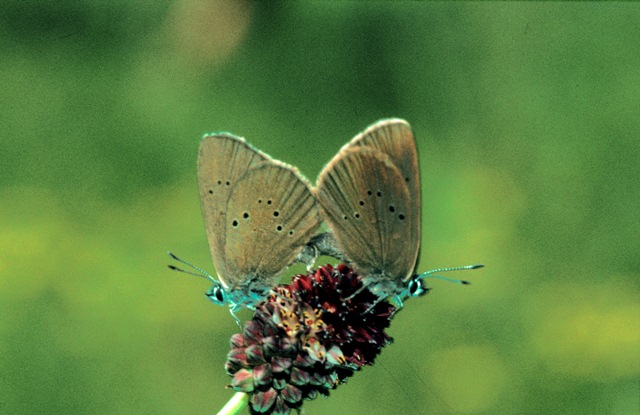
Photographs: Frits Bink ©.
Small, wing length 17 (16-18) mm. In the Benelux it occurred only in the Netherlands and was known from hay fields on wet peaty soils. It had disappeared by 1970.
In was reintroduced in 1990 into the reserve Moerputten near Den Bosch (‘s Hertogenbosch). The butterflies originated from a meadow near Krakow, Poland. The species disappeared from the introduction locality but appeared in 2001 spontaneously near Posterholt in Limburg, a locality where it occurred also in former days.
The butterfly is on the wing from early-July until early August. It is known from sub-continental climate to continental one, amplitudes 8 to 17. Required heat sum 800°d, maximum tolerated 2000°d, corresponding with climate windows of 25 and 38 weeks.
Ecological characteristics
Behaviour over time
Overwintering: half grown larva in fourth instar (last one) in an ant's nest.
Reproduction: oviposition starts after 1-2-days when the body contains 157 (130-181) eggs, potential production 1.1 times as much.
Larval feeding periods: in flower head 20 (14-26) days in period end-July until early-September, in ant nest 3-5 weeks from early-August until end-September, next spring 6-7 weeks from early-May until end-July.
Generations: always one.
Spreading of risk: spread in hatching of the adult butterflies and probably a second diapause by some larvae when condition of ant nests remain healthy.
Life cycle: egg about 8 days; larva 47 weeks; pupa about 25 days.
Life span of adult: very short, 1 week.
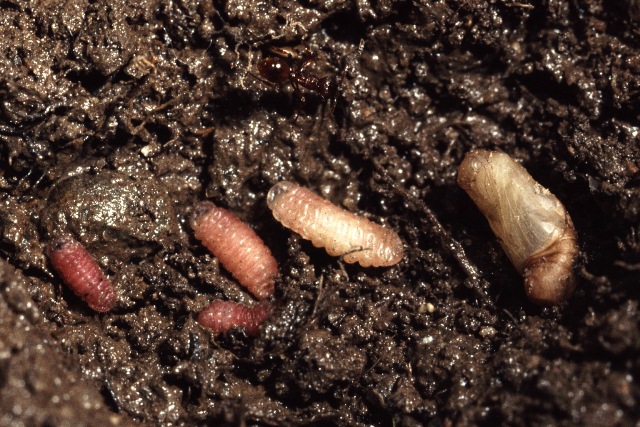 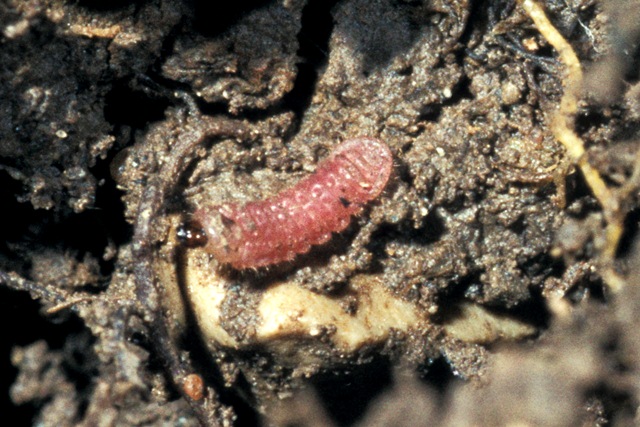
Photographs: Frits Bink ©.
Behaviour in space
From stay-at-home to migrant: stay-at-home, spatial requirement very modest.
Finding a mate: both sexes meet on the flower heads of the great burnet.
Orientation in the landscape: on the gradient from bog towards tall grass vegetation along a rivulet, also in meadows and hay fields.
Oviposition: on the flower heads of the great burnet in tall grass.
Defence
Threats from other organisms: alien ants.
Myrmecophily: honey gland and micro pores are functional after moult to fourth instar.
Threats from the environment: survival of the ant nest.
Feeding habits
Adult: nectar of the flower of its own host, great burnet.
Larva: larva in flower head are not cannibalistic, so usually there are several larvae present, up to 7 (personal information from Irma Wynhoff). After third moult the larva drops to the ground and waits to be picked up by an ant and brought into the nest, where it sometimes feed on the grubs but mostly begs for food from the ants feeding their own larvae. This enables several larvae to grow up together.
Larval foodplants
Plant species: Rosaceae, Sanguisorba officinalis.
Journal
Rearing experiment based on specimens from Zimmerbach, France:
27 July 1983: 3 females collected from a hay field.
2 August: females dissected, no eggs laid.
Table 54-1. Results of dissections

Table 54-2. Collection and observation localities
D, Grossheirath 49° 59’ 05”N – 11° 04’ 50”E; 17 June 1985 (5 larvae and 1 pupa in ant nest, one larva probably in second diapause).
F, Raon-l’Etape 48° 25’ 17”N – 6° 51’ 03”E; 22 July 1983.
F, Vosges, Zimmerbach 270 m, 48° 04’ 25”N – 7° 14’ 45”E; 27 July 1983, 20 August 1984 (together with M. teleius).
Fig. 54-1. Maculinea nausithous, phenogram adapted from Bos et al. 2006: 185.
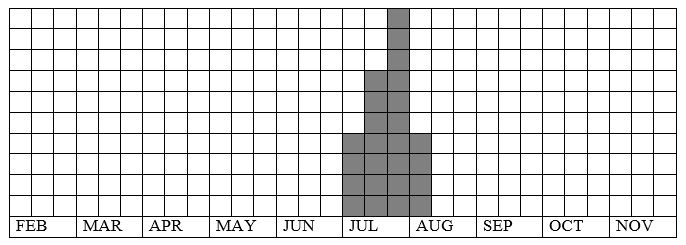
Fig. 54-2. Maculinea nausithous, habitat characteristics.
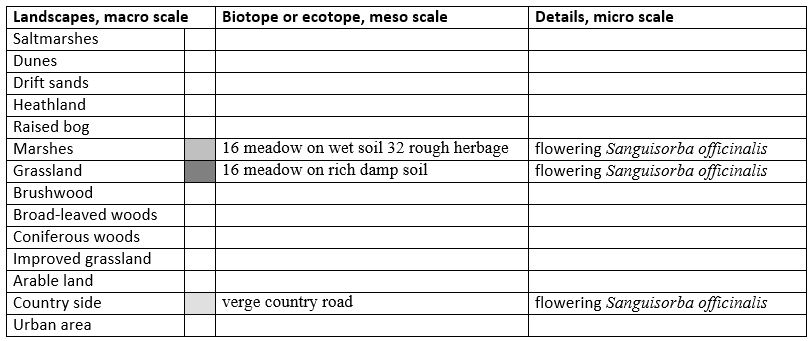
Fig. 54-3. Maculinea nausithous, climate matrix, heat-sums 800 - 2000°d.
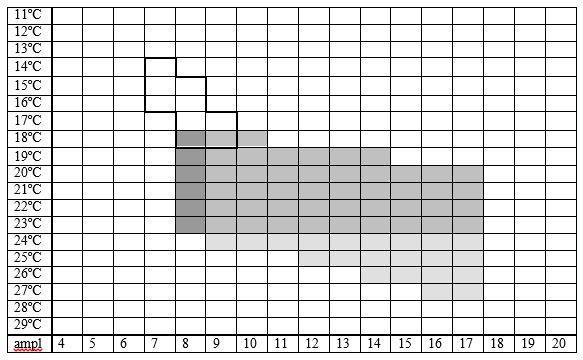
|










